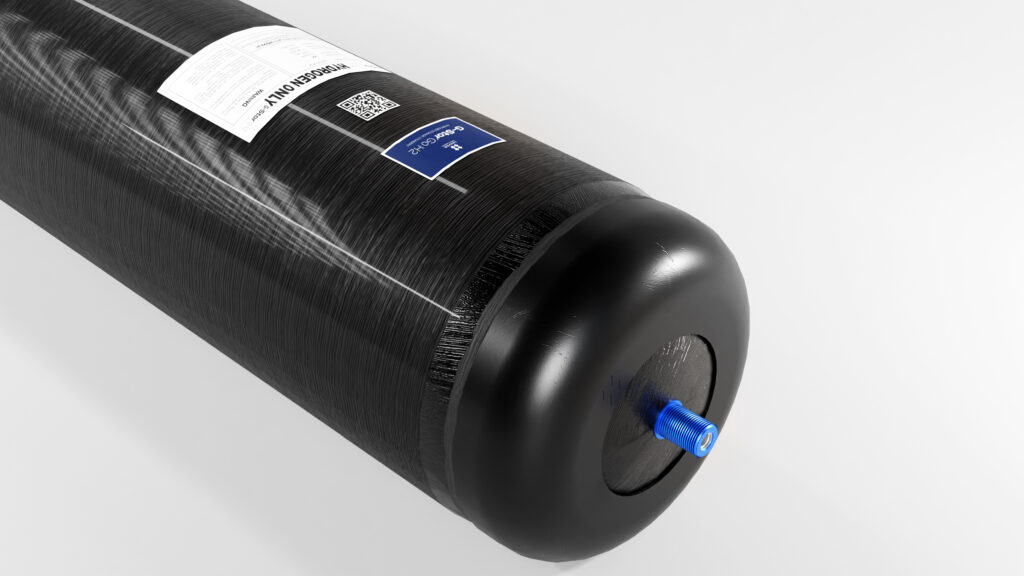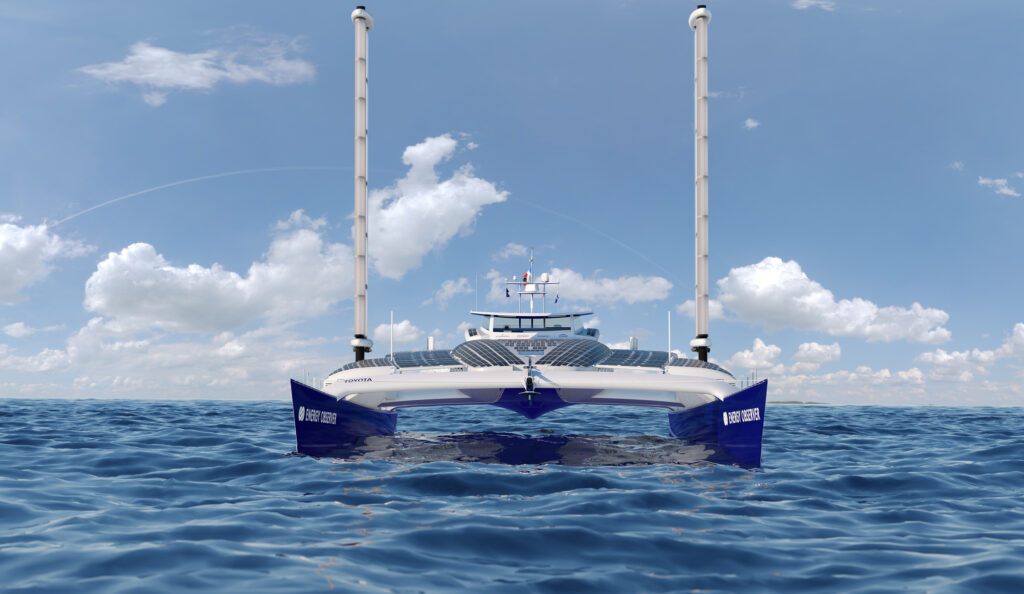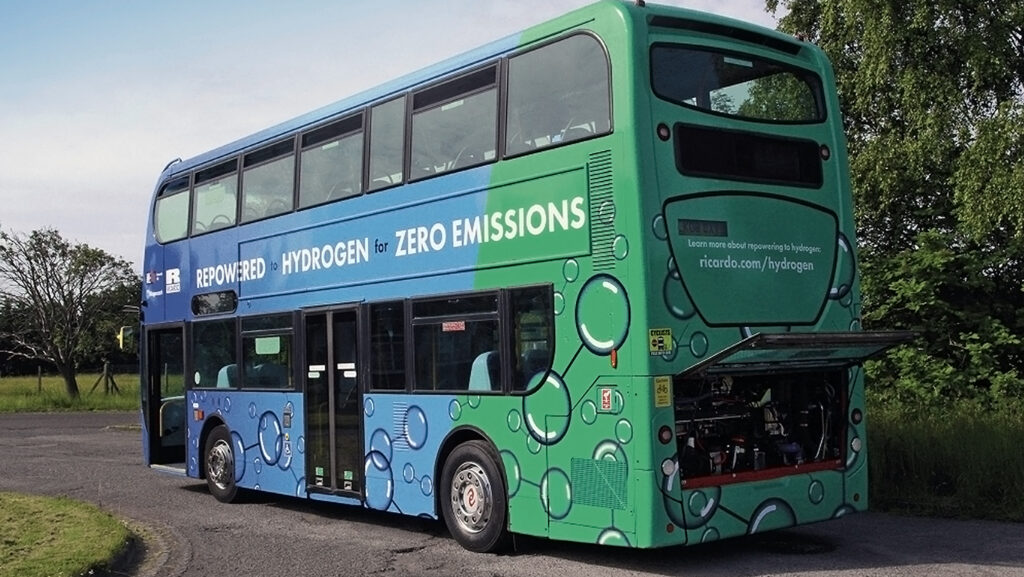US & Asia-Pacific +1 800 764 0366 | Europe & Middle East +44 (0)115 980 3800
News:
US road and rail operators harnessing hydrogen fuel thanks to Luxfer
by Scott Anderson, Vice President Sales and Marketing at Luxfer Gas Cylinders USHere in the United States, we’ve seen a real focus on transitioning to sustainable energy. In fact, the advancement and deployment of hydrogen technologies has been supported with allocated funding into research, development, and infrastructure.This includes incentives by the US federal government. In 2021, it committed around $11 billion through legislation including the 2021 Infrastructure Investment and Jobs Act (IIJA). A year later came the Inflation Reduction Act.At the end of January 2023, it was estimated that around 170 hydrogen projects existed in North American. This accounts for approximately 15% of the total announced projects globally. By 2030, it’s expected that 135 will be fully or partially commissioned by 2030, representing $46 billion of committed direct investment in hydrogen value chains.As alternative fuels and particularly hydrogen fuel systems continue to be a high-growth market for us, we are paying close attention to how the market continues to expand and innovate in North America.Realizing the potential of hydrogenThe US has considerable potential to dominate the hydrogen production landscape thanks to factors including:- Ample production resources- Over 1,600 miles of hydrogen pipelines- Three caverns which can store thousands of tons of product- Eight liquefaction plants spread nationwide.However, there is still some way to go to make hydrogen more accessible. This is why our alternative fuel experts have been working hard to address the hydrogen infrastructure deficit by developing bulk gas transport systems (BGT).Until dedicated hydrogen pipelines are established across North America, BGT or ‘virtual gas pipelines’ can bridge the gap. Our Multiple Element Gas Containers (MEGCs) for example, are being used in Europe. They have the capacity to store up to 1.5 tonnes of gas. BGT solutions will play a vital supporting role in the US if the proposed green hydrogen-producing hubs come into effect. Energy companies will be able to rely on our hydrogen cylinders to ensure optimum safety and efficiency when moving hydrogen by road or rail.That is why we’re so pleased to be collaborating with long-term partner and renowned hydrogen specialists, BayoTech. BayoTech’s HyFill™ bulk transport trailers incorporate Luxfer’s high-capacity Type 3 composite cylinders. This produces a cutting-edge hydrogen storage system with maximized efficiency and payload. Using our Type 3 hydrogen cylinders means that more sites can be refueled from each trailer, reducing transportation costs and improving driver productivity.BayoTech recently announced a new strategic supply agreement with a major OEM - yet more evidence of the fast-growing hydrogen economy and exciting collaborations between pioneering companies, like Luxfer, in this sector. As a result of this partnership, hydrogen will be produced at BayoTech’s network of hubs. These will then fuel Class 8 hydrogen fuel cell electric trucks - with BayoTech’s HyFill bulk hydrogen transport trailers transporting the gas across the country in Luxfer’s Type 3 high pressure cylinders.It’s also encouraging to hear the news that 60 refueling stations will be established by 2026 – which will provide simple and reliable access to hydrogen nationwide. This will be particularly encouraging for operators who are looking to transition towards clean fuels, but hold reservations about hydrogen availability and infrastructure.We have noticed a distinction between the European hydrogen storage market and the US. In Europe there is strong demand for MEGCs. Whereas, in the US emphasis is on smaller capacity pods, which can connect hydrogen hubs via 20-foot trailers. To meet such requirements, we can supply 25 cylinders per pod, operating at 517 bar – this is the ideal pressure to minimize trailer price and reduce the amount of compression required at filling stations.
Driving sustainability on the roadIn the US, transportation is the largest emitter of greenhouse gases (27%). It is also responsible for 21% of total carbon emissions worldwide. Therefore, decarbonization of the transport industry is critical – and hydrogen is quickly taking on a significant role.Luxfer is proud to already be involved in a variety of hydrogen transport projects, providing its trusted, lightweight and high-performance cylinders for a range of applications, including:- Working with A-1 Alternative Fuels and U.S Hybrid on hydrogen fuel cell shuttle buses.- Working with our customers on hydrogen transit bus projects to help California’s bus fleets become greener.As for HGVs, we have observed growing interest for prototypes, and we remain prepared with a variety of hydrogen storage solutions, as hydrogen access proliferates, and more operators are encouraged to make the switch.Full steam ahead for railCalifornia is widely known as a hub for green transport. From 2030 the state government will be implementing complex curbs on emissions for rail operators. Many locomotive engines, of tier four or lower, will not qualify under the new requirements and so operators must make tough choices – most immediately for short-haul journeys.Luxfer has unrivalled experience in helping to adapt existing equipment to utilize hydrogen. For example, in 2020 when CPKC (formerly Canadian Pacific) declared plans to develop North America’s first line-haul hydrogen-powered locomotive by retrofitting a diesel freight locomotive, they incorporated our new, lightweight G-Stor™ Go Type 4 cylinder technology in their prototype. The responses we received on this project, our first hydrogen Type 4 product, were brilliant.It’s also very promising to see that CPKC is continuing to expand hydrogen transport, marking its Calgary and Edmonton rail yards as sites for new production refueling stations.We’ve also successfully collaborated with multiple US-based rail operators who are leading the way on clean transport, such as Sierra Northern Railway (SERA) via Optifuel Systems LLC. One of our current projects will introduce two line-haul locomotives with a range of over 1,000 miles thanks to a Luxfer hydrogen system.In a mission to decarbonize the industry, our global network has been developing hydrogen fuel systems for trains for some time. In 2019, Luxfer Gas Cylinders was a major partner in bringing the UK’s first hydrogen-powered train to fruition.The HydroFLEX project utilized a former Thameslink electric train, retrofitted to run using a hydrogen fuel system. This was achieved through a close collaboration between Luxfer’s Nottingham-based alternative fuel experts, Porterbrook and the University of Birmingham’s Centre for Railway Research. In September 2020 the HydroFLEX, using Luxfer G-Stor™ H2 cylinders, hit the mainline for the first time.Hot on its heels is the HydroFLEX’s successor, which began development in 2020. It includes a system containing more than 275kg of hydrogen. The train has quadruple the power of the original HydroFLEX, hitting speeds of over 80mph in UK mainline testing.
Trailblazing technologyLuxfer entered the alternative fuel sector in 2001 with our very first Natural Gas system. Fast forward 15 years and 11,000 Natural Gas systems later, and we have built an industry-leading reputation for expertise and innovation in the sector. As leaders in cylinder technology, we recently introduced our G-Stor™ Go H2 cylinder with Type 4 technology to the North American market. The high-pressure cylinder can hold high storage volumes whilst remaining lightweight. The range is available in three sizes, from 14.5 to 19.1kg of hydrogen storage, and is capable of storage pressures up to 350 bar (5,000 PSI). Its proven boss-to-liner interface results in minimal permeation, making it a certified, cost-effective hydrogen storage solution ideal for long range rail, boats and other vehicles.Whilst our Type 4 cylinders are an excellent solution for large storage, at Luxfer we are technology neutral. Therefore, if fast fill is critical our G-Stor™Pro Type 3 is a brilliant option. Although our Luxfer-manufactured aluminium liner, fully wrapped with aerospace-grade carbon fibre, makes for a heavier product, the Type 3 technology allows for all the hydrogen involved in the system can to be used, with no wastage. We see this as one of Luxfer’s greatest strengths - our ability to meet each of our customers’ bespoke requirements.
The future’s greenLuxfer remains, at 125-years-old and with an 80-year legacy in gas containment, at the very cutting edge of the green energy transition. Having spent over 20 years developing hydrogen solutions to fuel buses, trucks, trains, marine vessels, refuse vehicles and more, today we continue with a mission to widen access to, and applications for, hydrogen energy.Our future is very bright. The Luxfer team in the US has been receiving an increasing number of road, rail and bulk gas transport inquiries over the last three years. We have confidence in our applications and the excellence of our global team, which has delivered world-leading projects, to meet and exceed expectations in these areas.Luxfer’s proprietary cylinder technology and demonstrated alternative fuel expertise, is poised to play a leading part in developing the gas containment solutions of tomorrow.
McKinsey & Companyhttps://www.c2es.org/content/regulating-transportation-sector-carbon-emissions/



